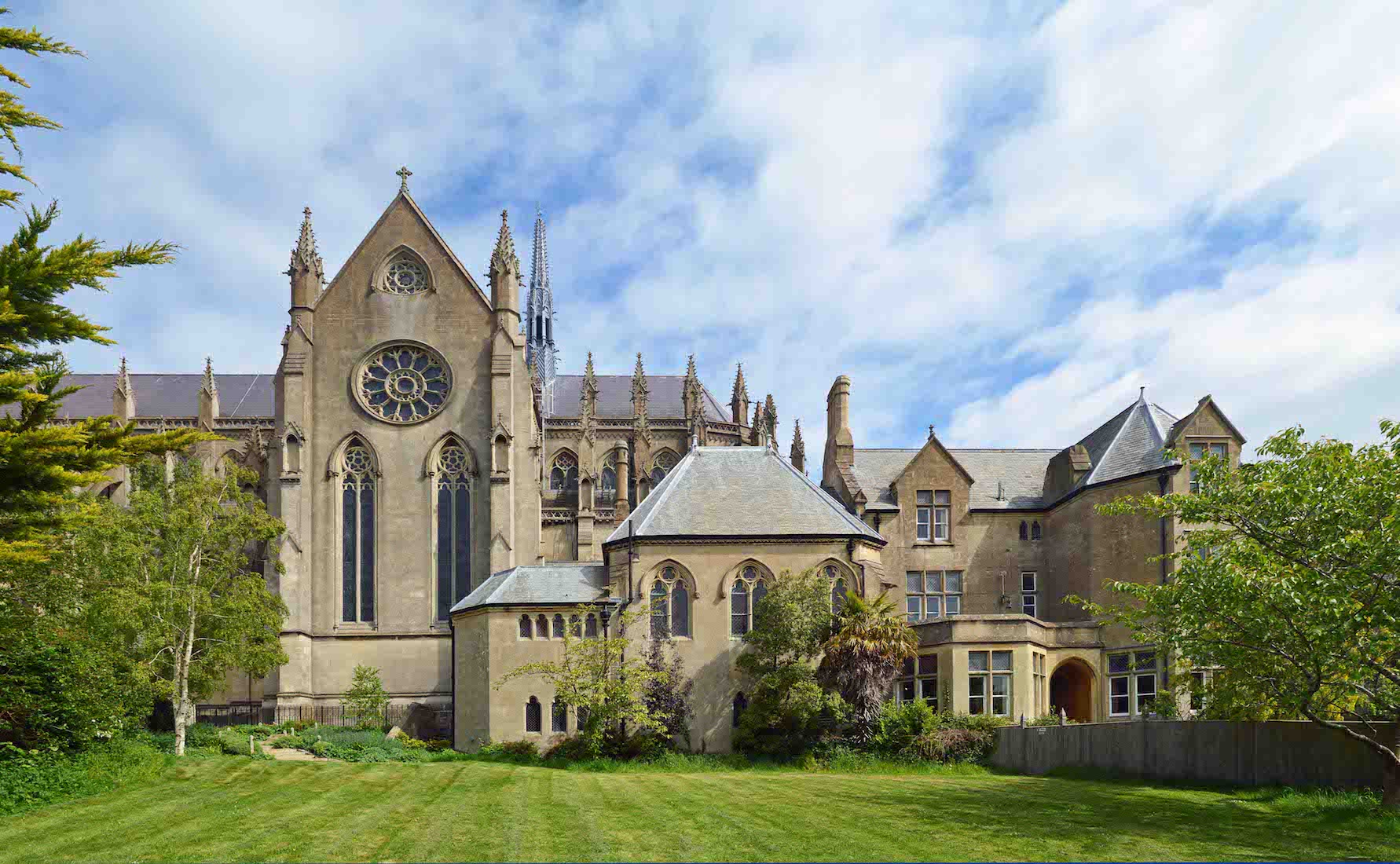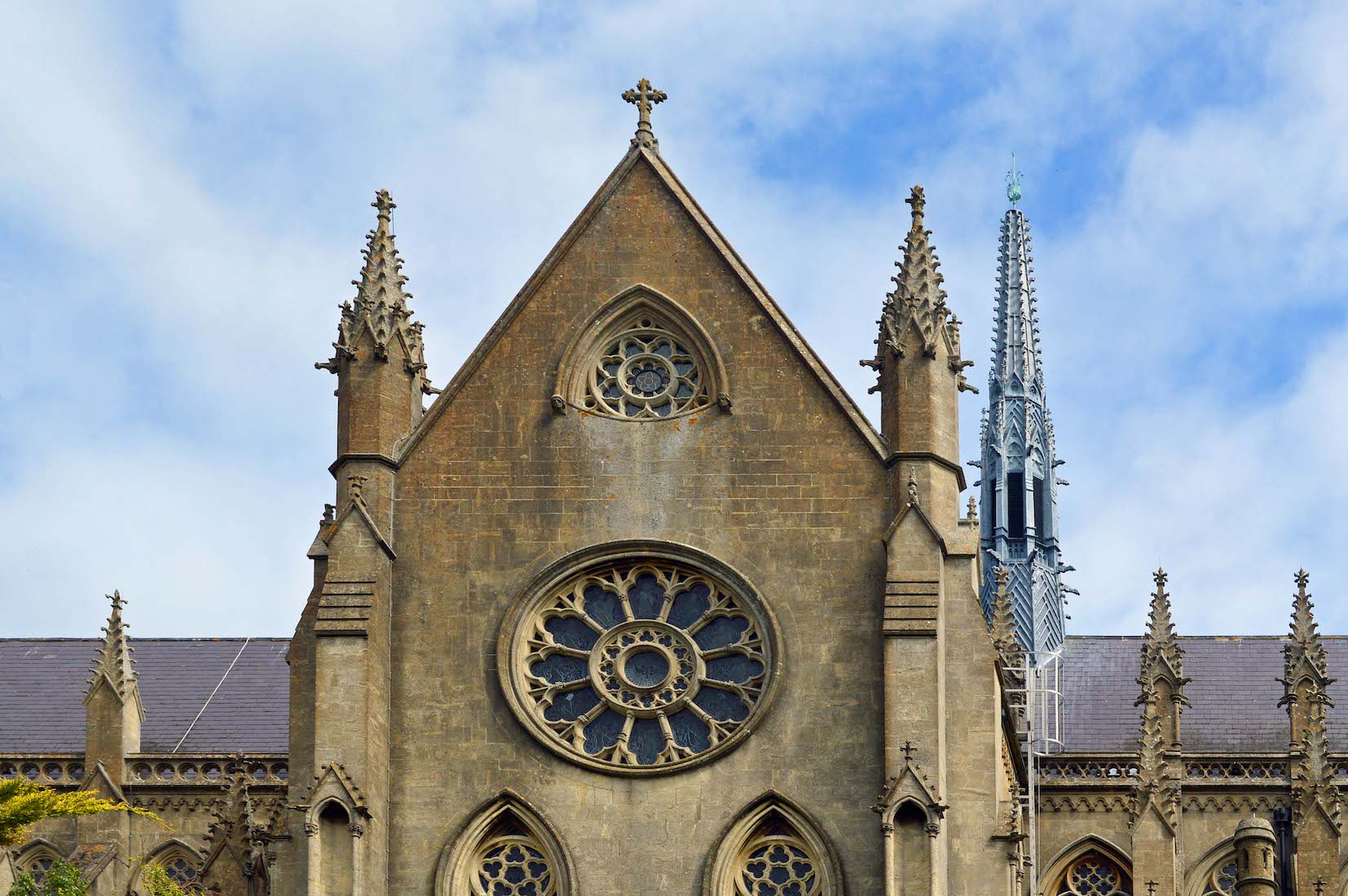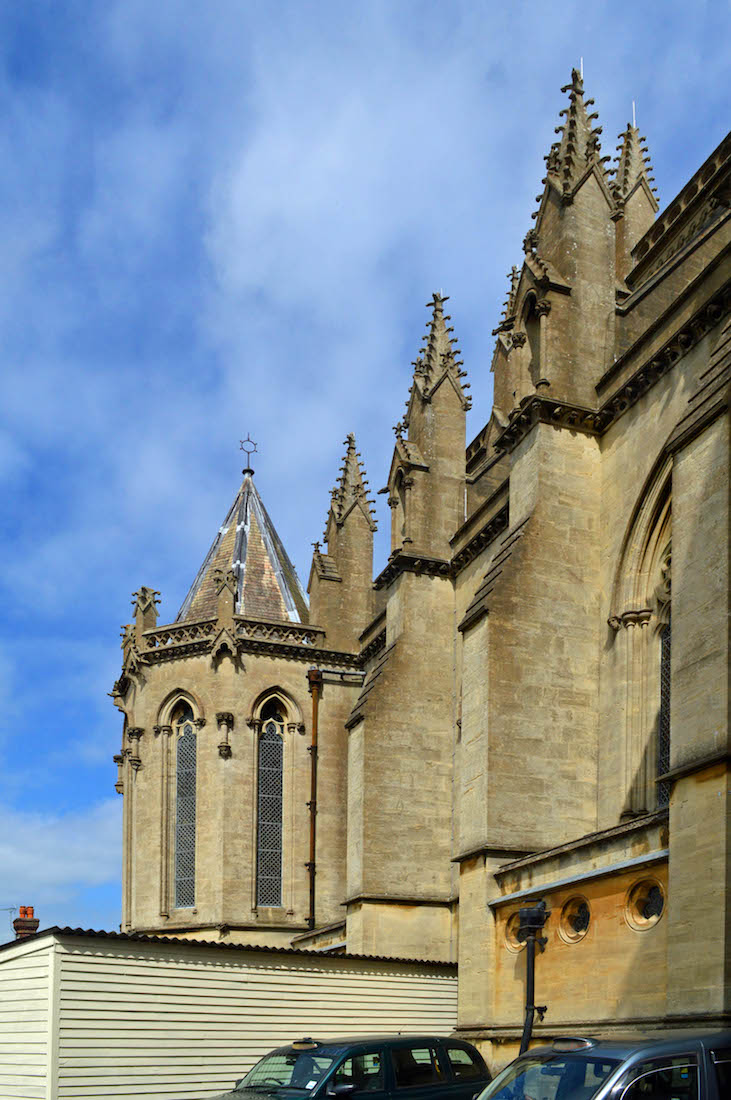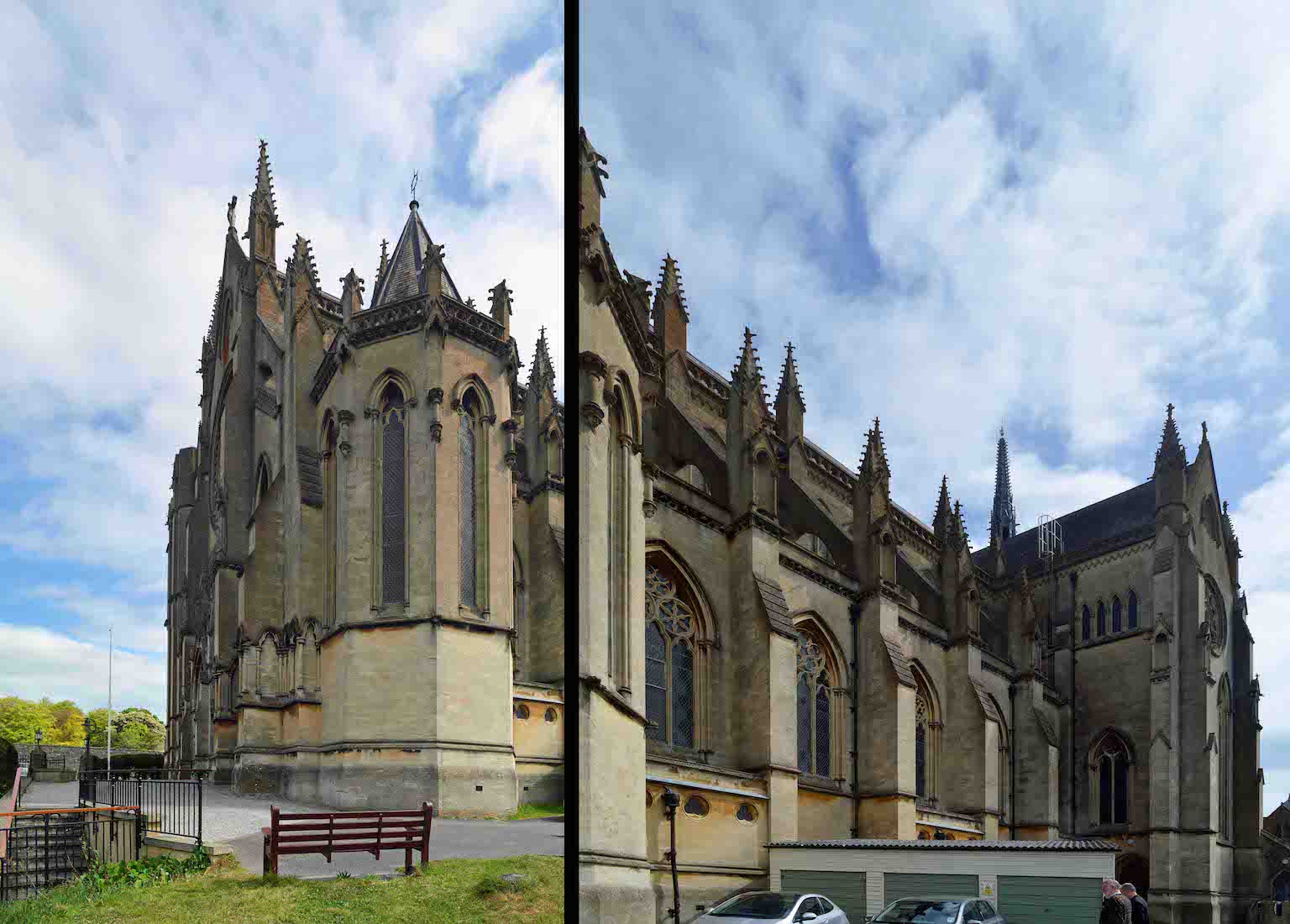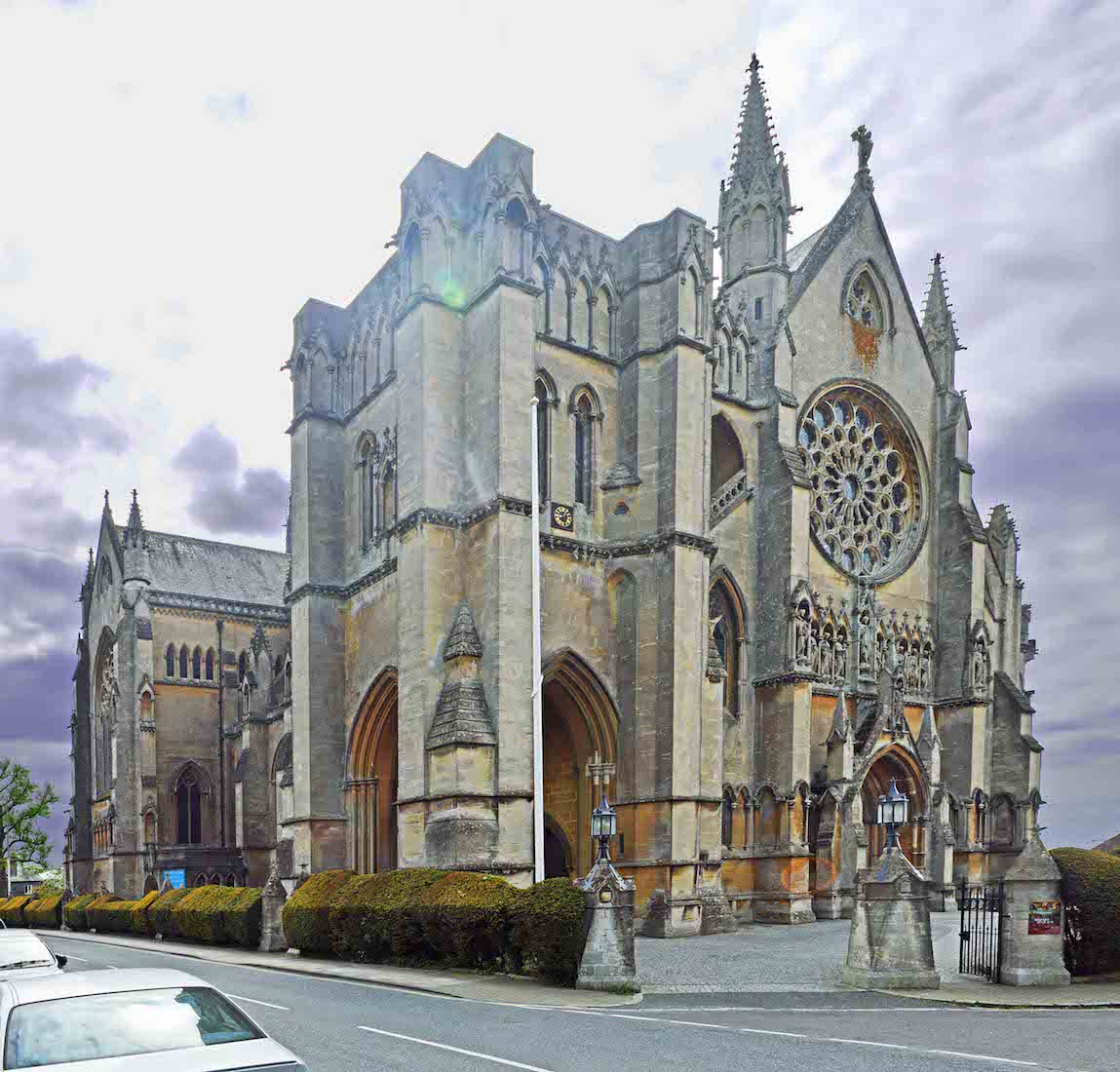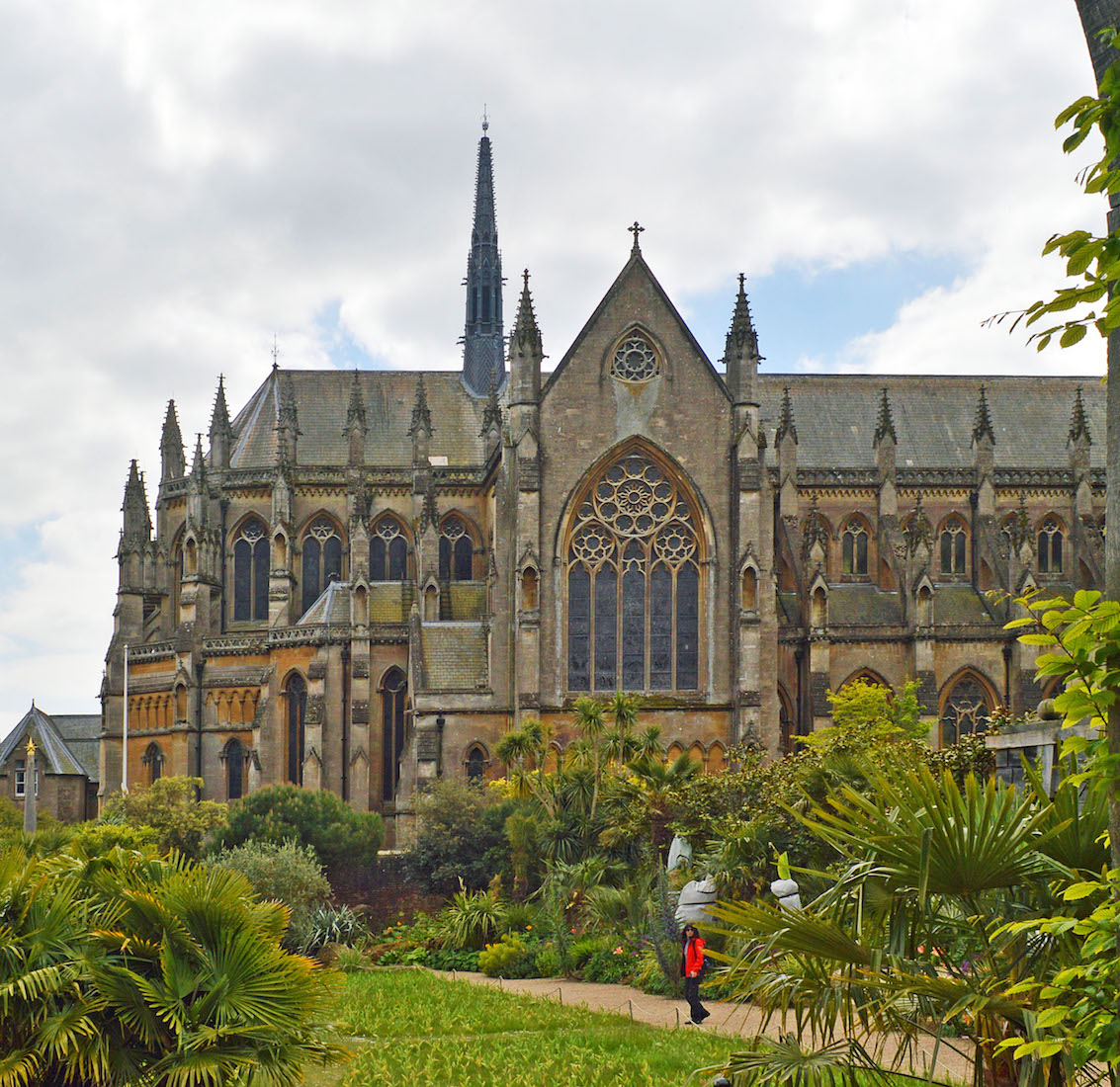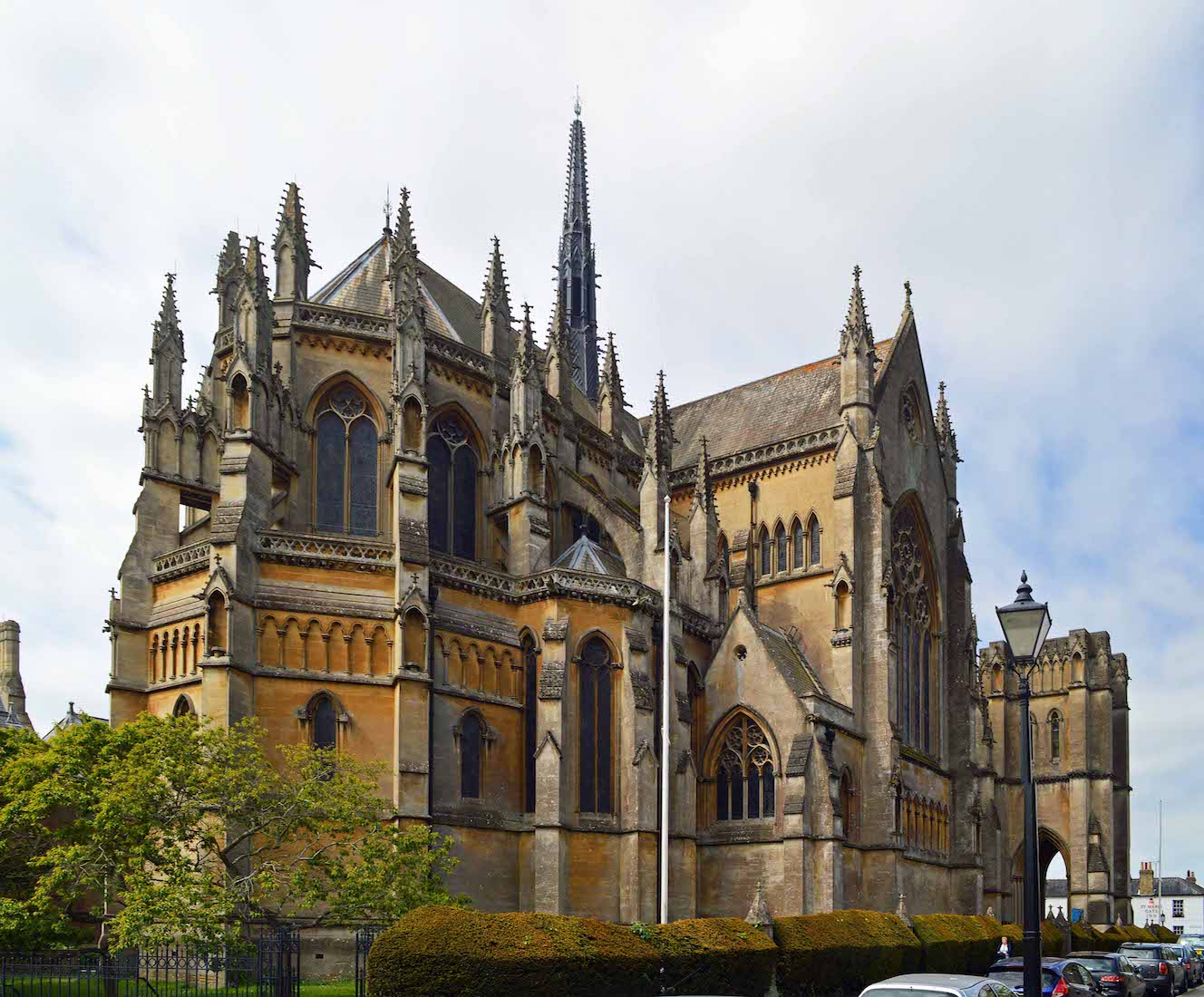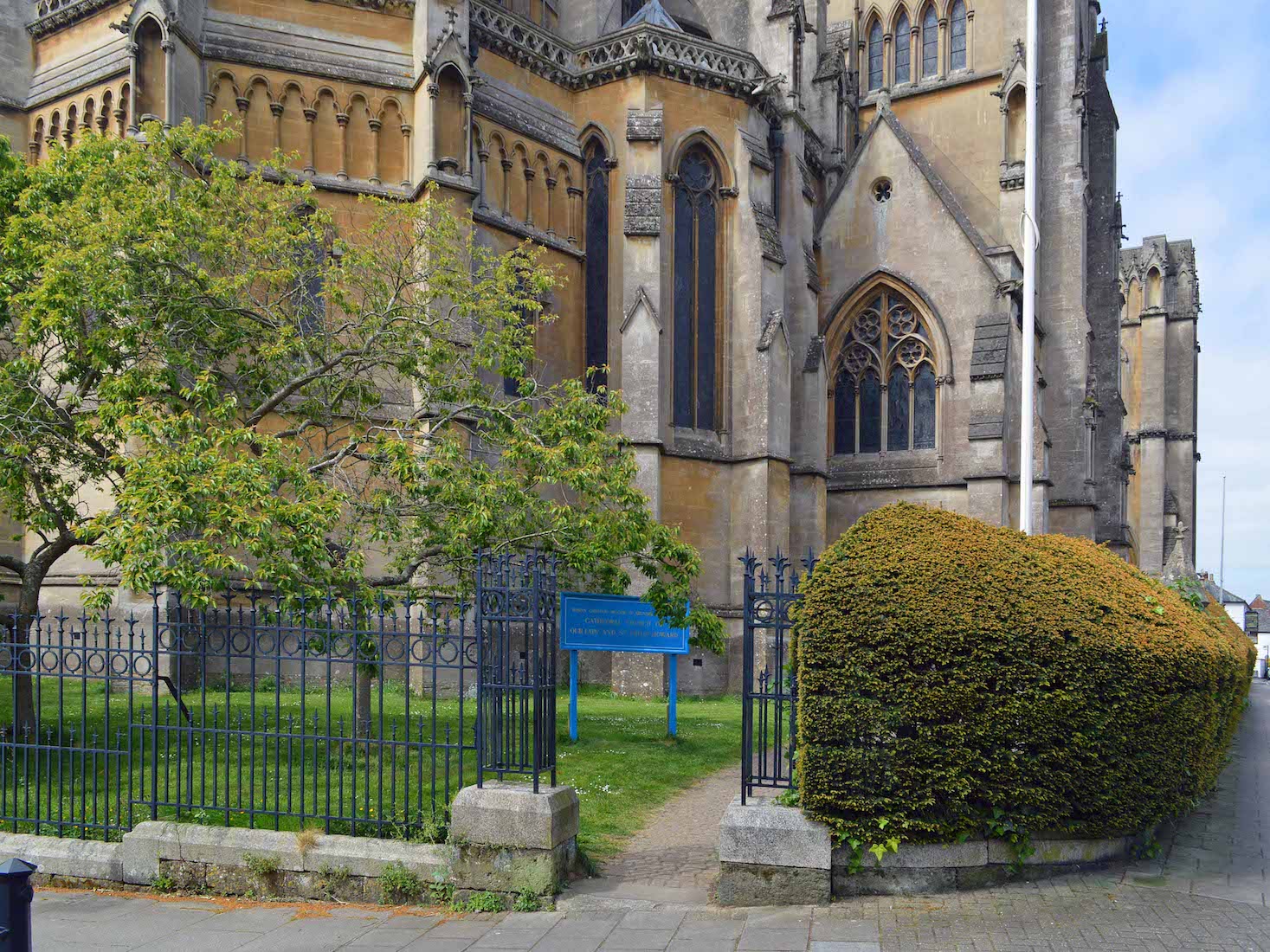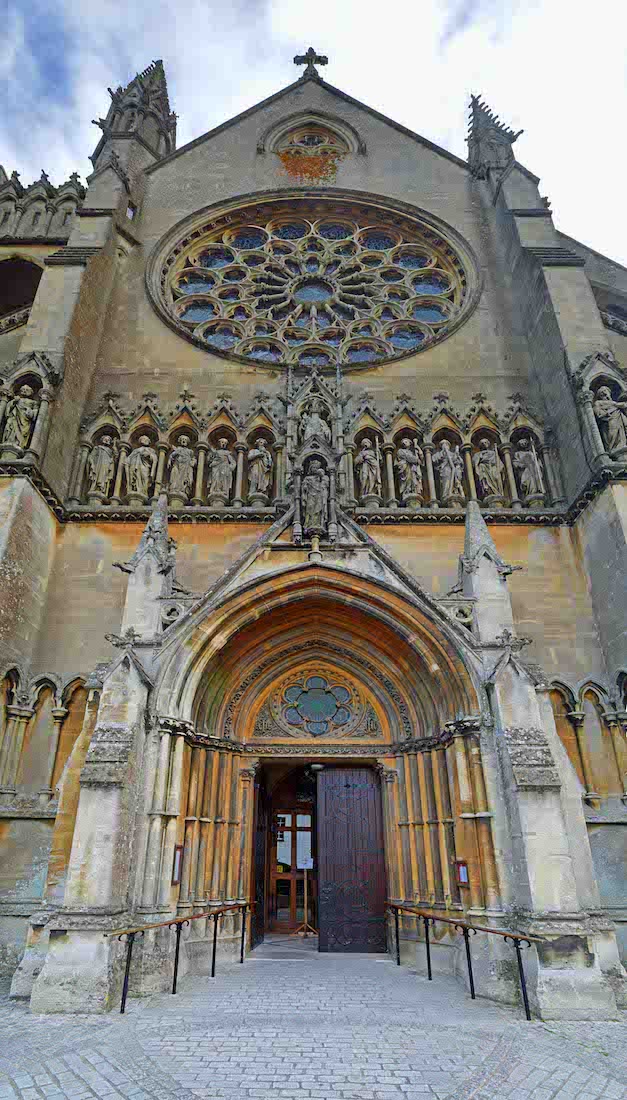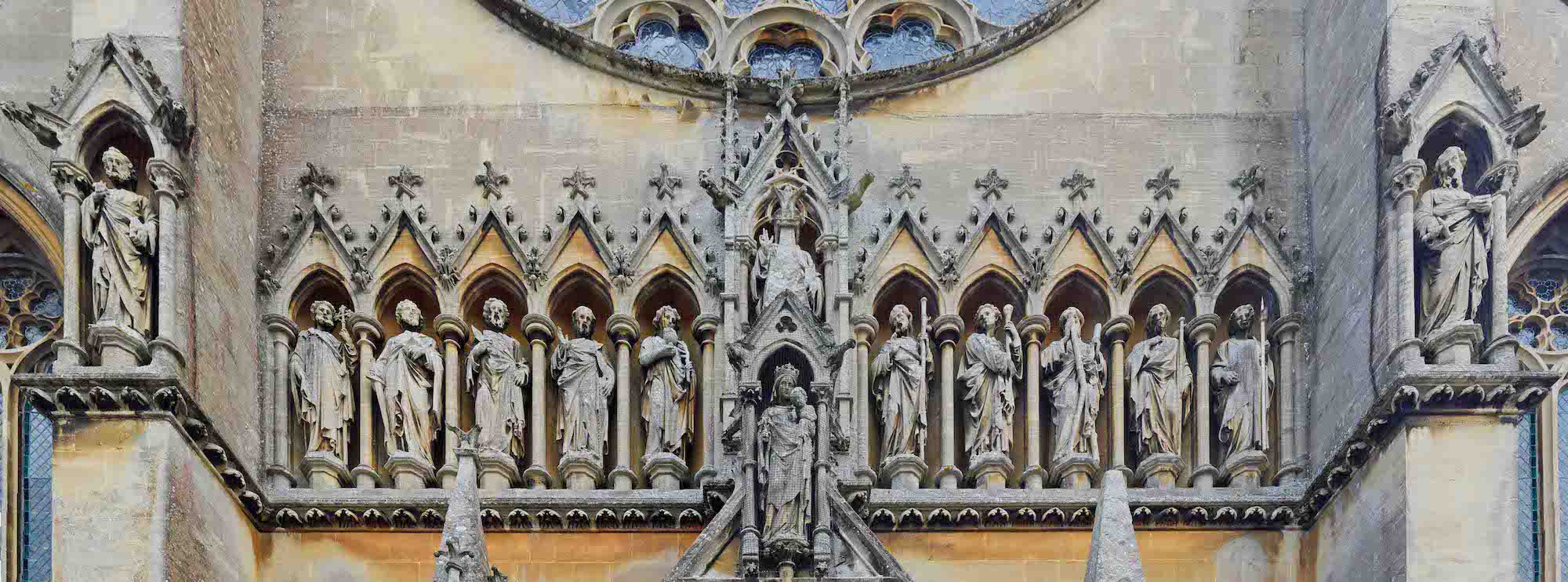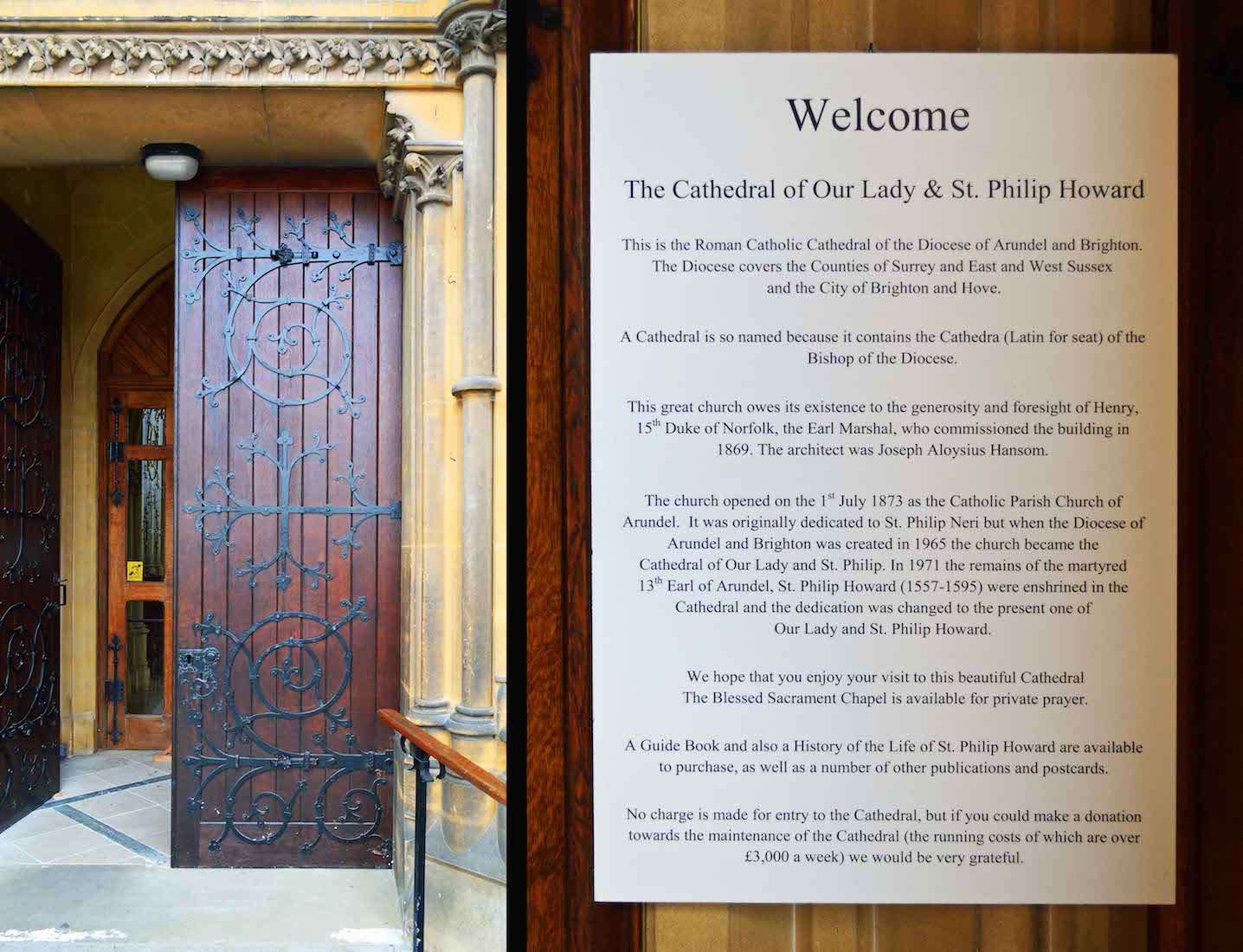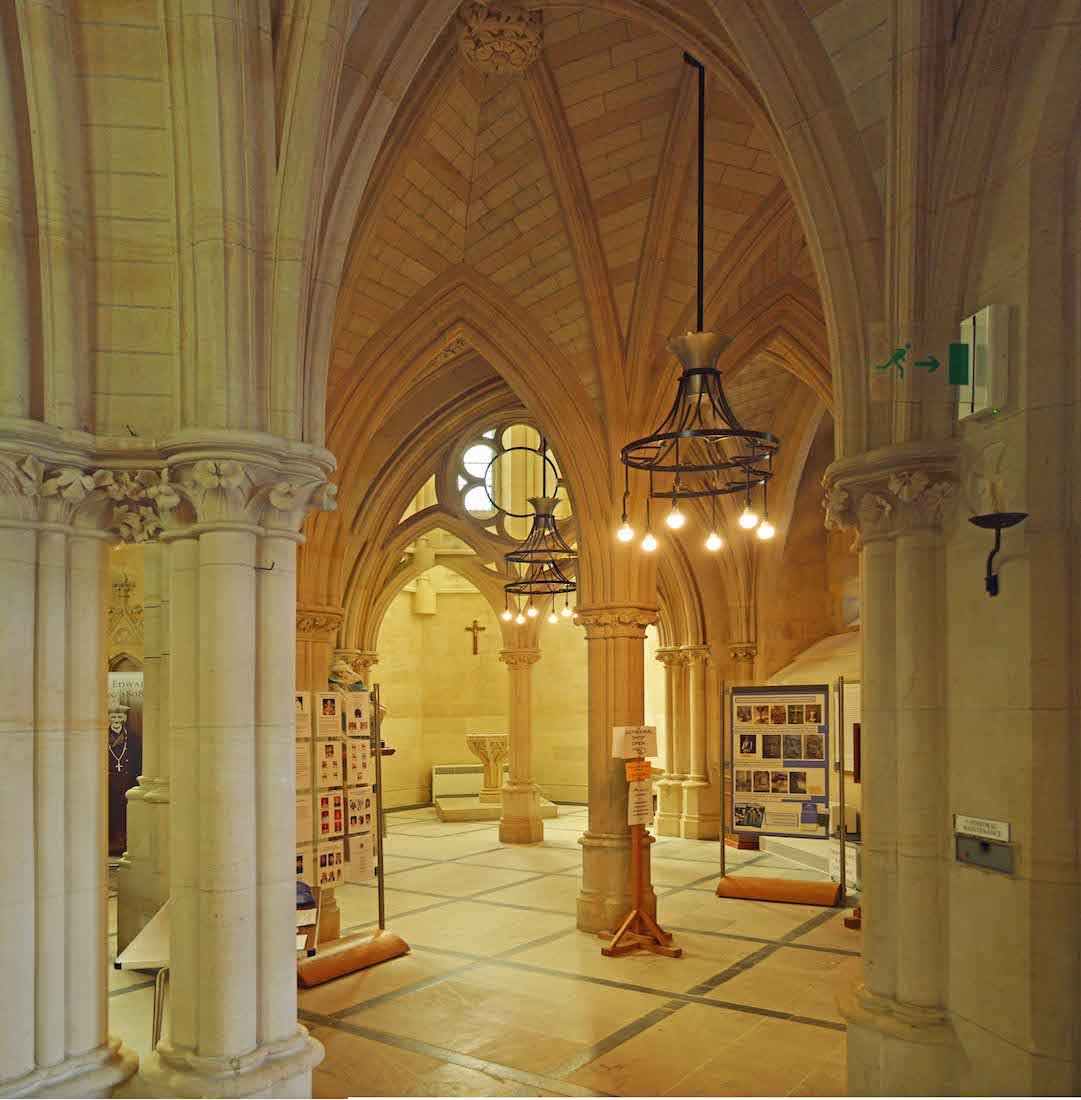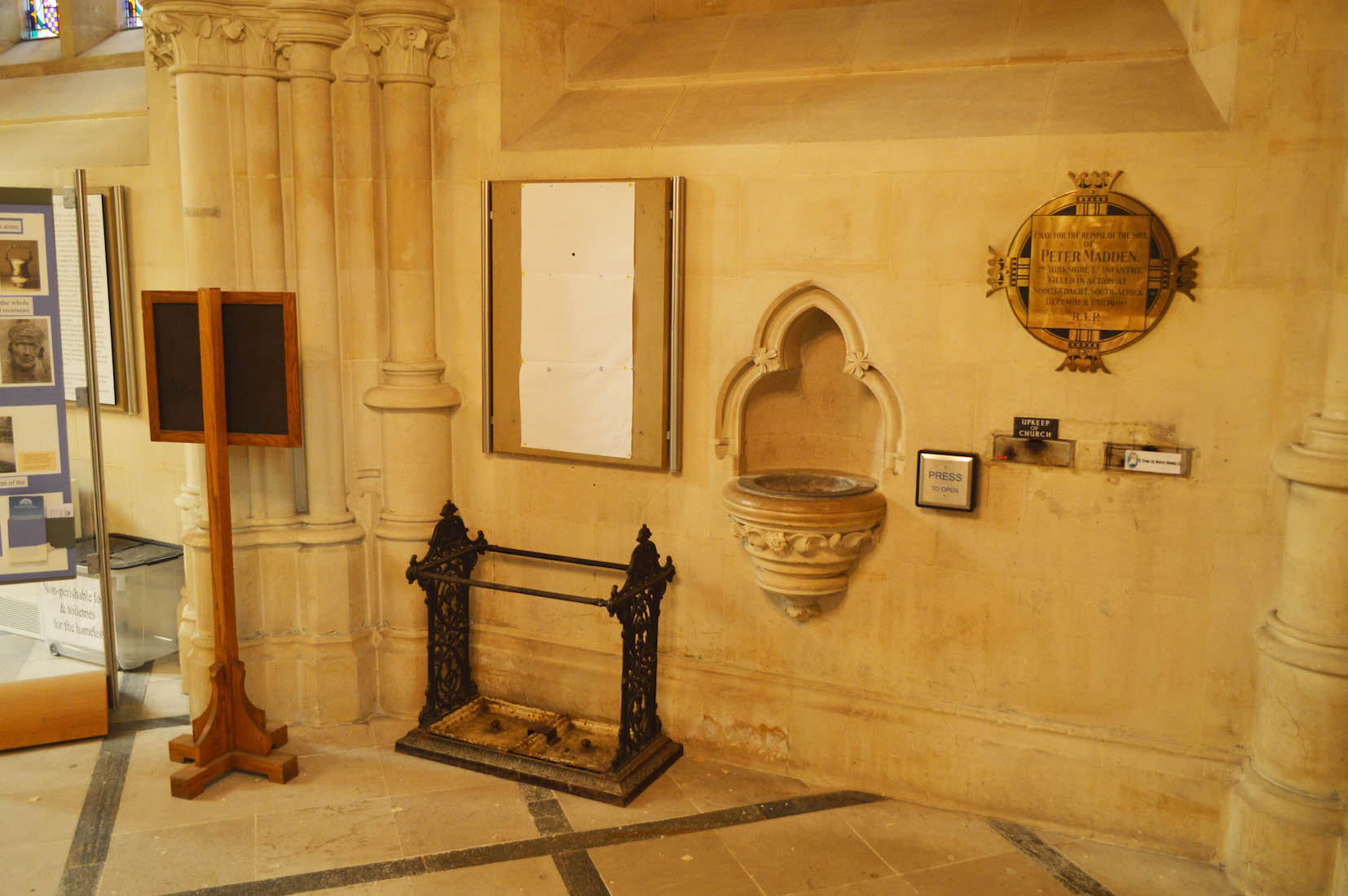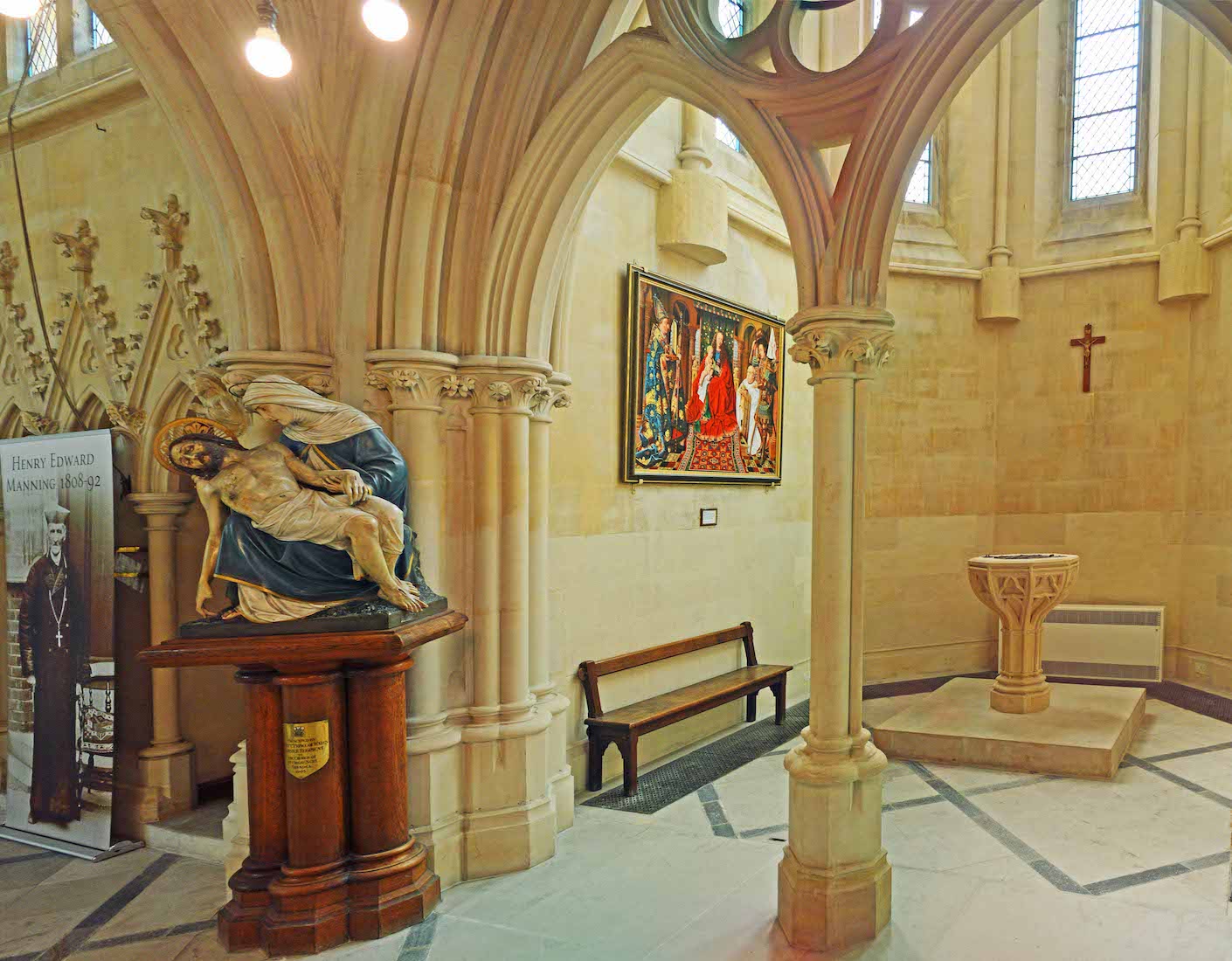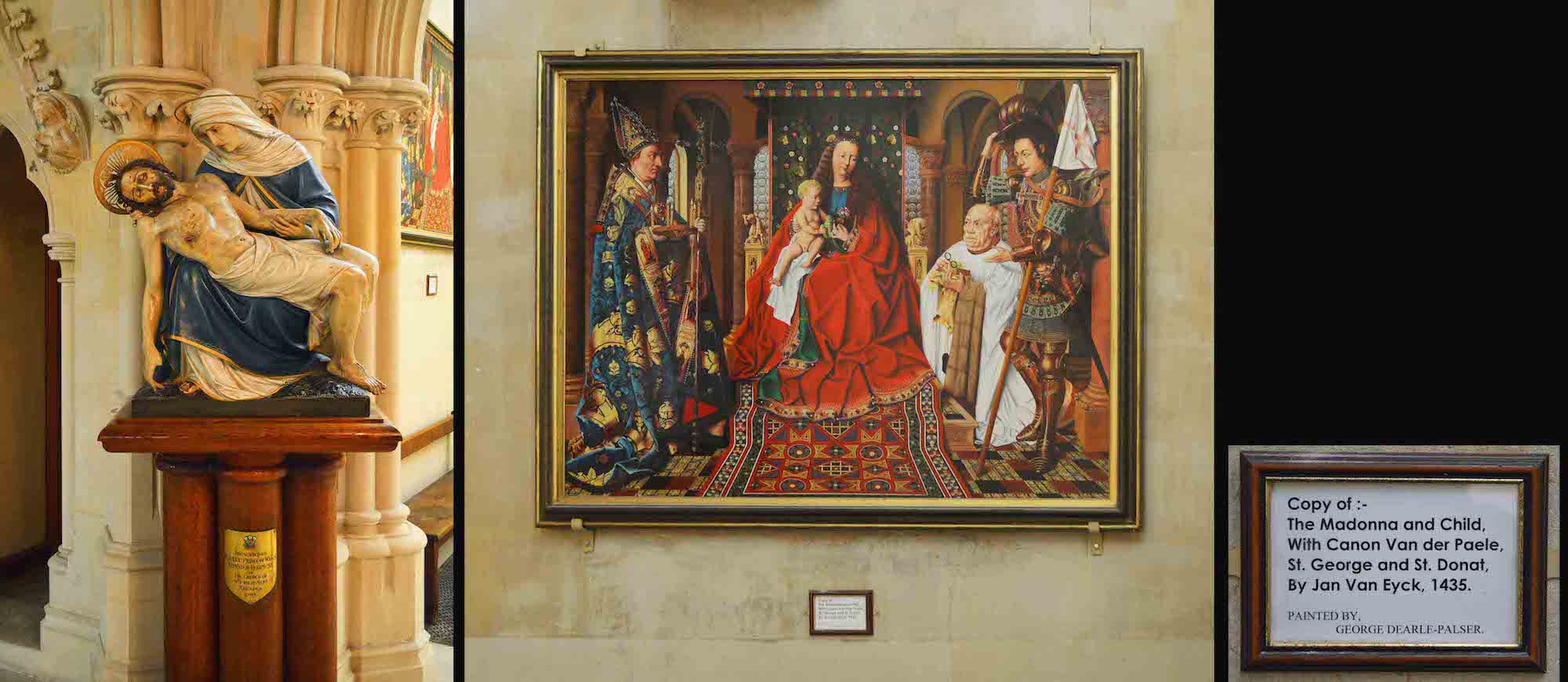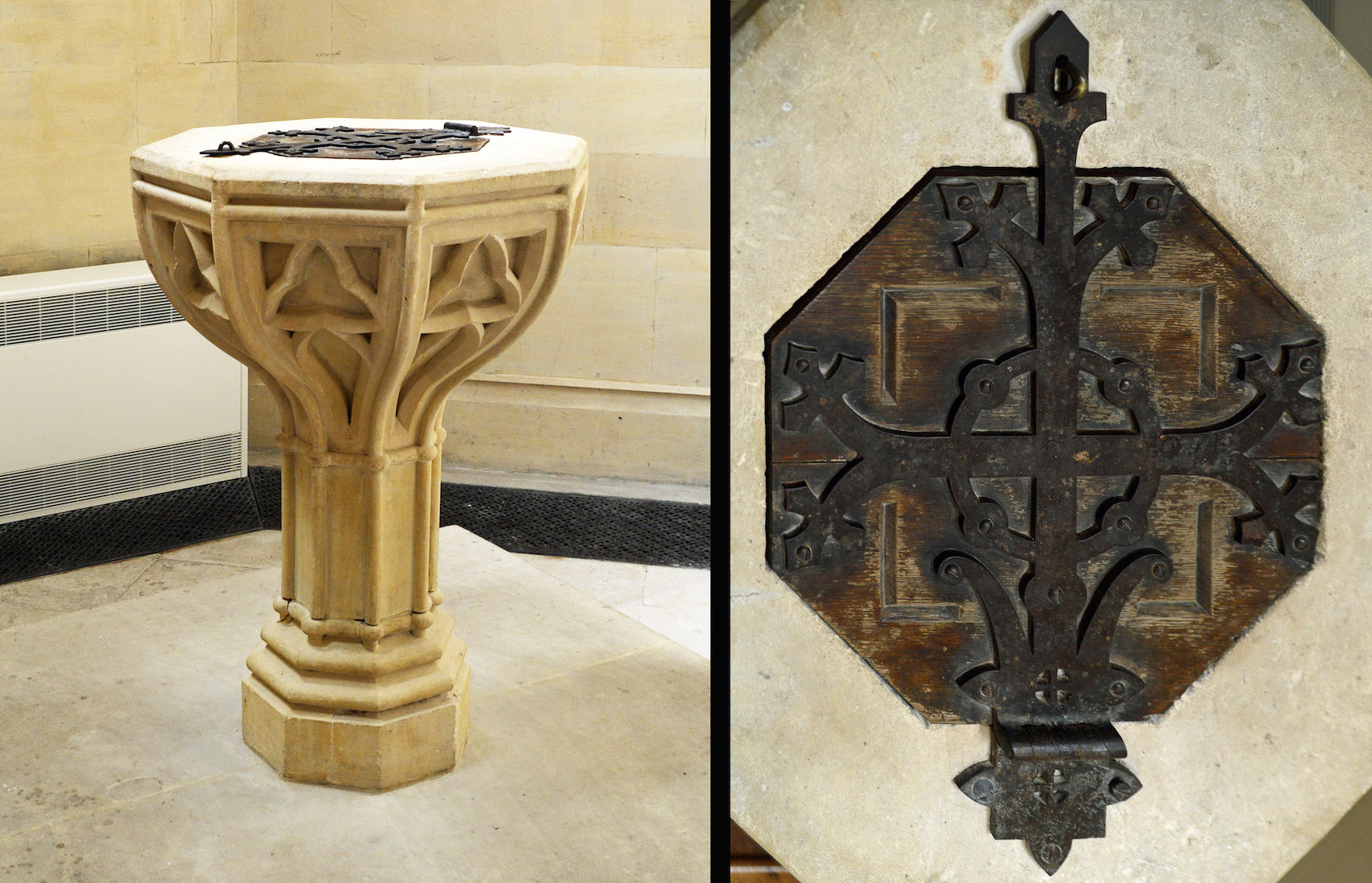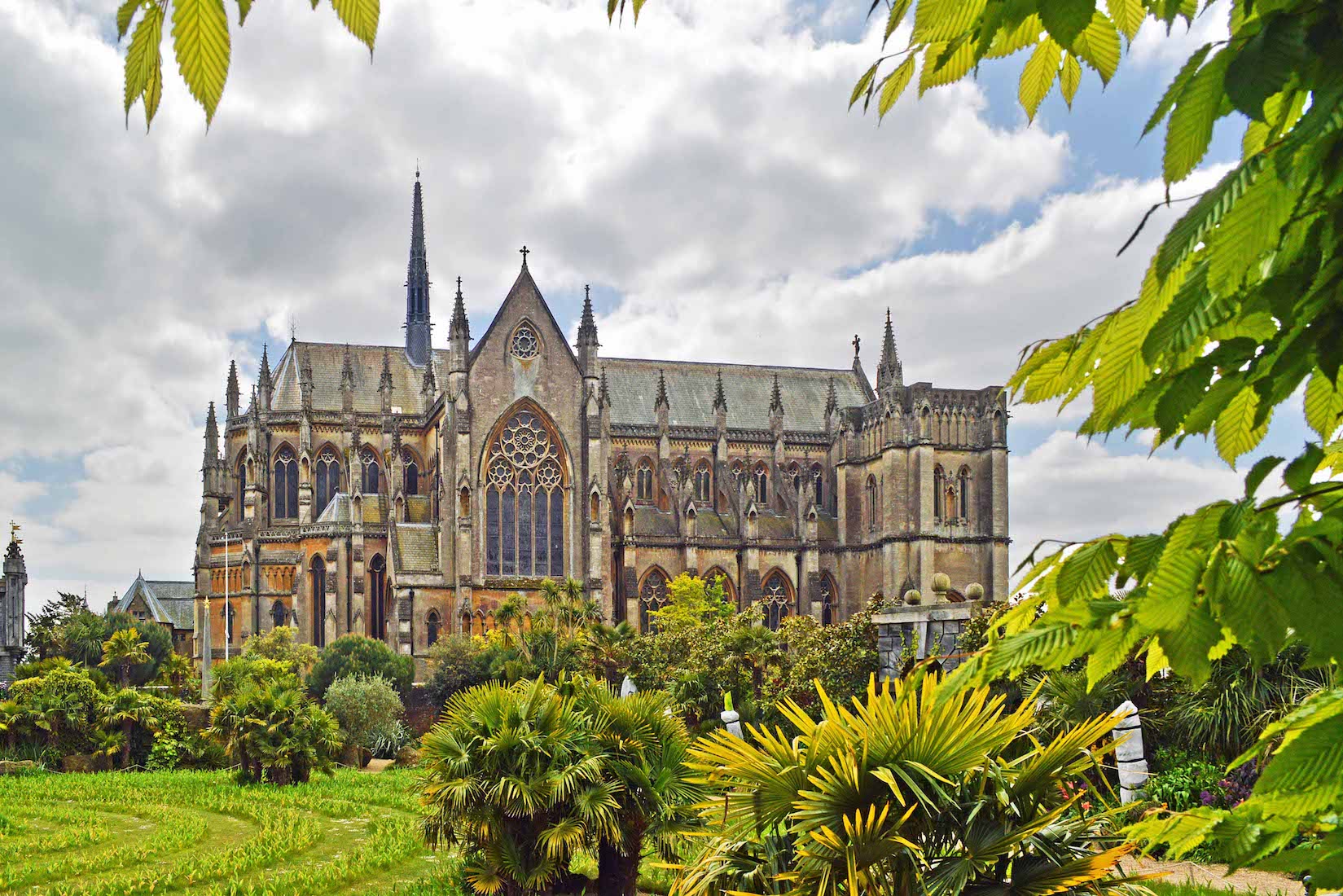
Arundel Cathedral – The Cathedral of Our Lady and Saint Philip Howard – is Roman Catholic, and set prominently up on a hill overlooking the township of Arundel. It is rather hemmed in by other buildings, but good views like this can be obtained from the grounds of Arundel Castle. PLAN
2. SATELLITE VIEW
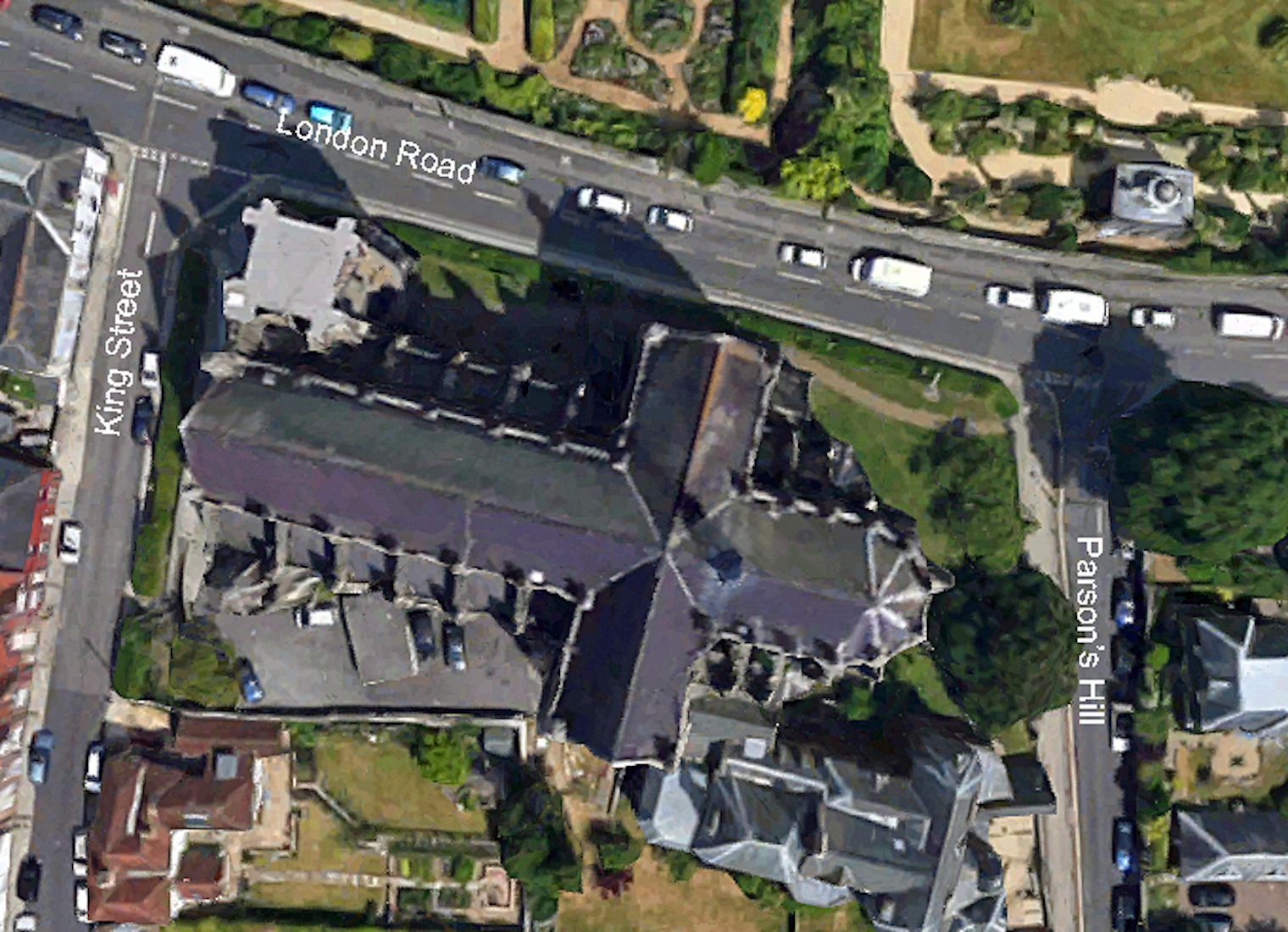
The Cathedral is cruciform in shape with the square bell tower at upper left. The Castle gardens can be glimpsed at the top of this view. The sanctuary of the Cathedral at left is very close to due east, so we shall identify our liturgical directions (East, West, North South with capital letters) with the corresponding geographical directions. We see that chapels flank the chancel, and another building abuts the South transept. A flèche rises up from the gable, just East of the transept.
3. SOUTH TRANSEPT AND SANCTUARY
It is not possible to walk right around the Cathedral, but we try! From this small lawned area we look up to the South sanctuary and transept, noting the rose window and unusual double lancet windows of the transept. • The building was dedicated in 1873 as the Catholic parish church of Arundel, and became a cathedral at the foundation of the Diocese of Arundel and Brighton in 1965. It now serves as the seat of the Bishop of Arundel and Brighton.
4. SOUTH ROSE WINDOW
In this view we can see the South rose window, the crocketted pinnacles, and the fancy flèche rising up from the gable. • The building is Grade I listed, and regarded as one of the finest examples of Gothic Revival architecture in the French Gothic style in the country.
5. SOUTH NAVE
We follow round the walls, along the South nave to the corner baptistry. Curiously a triple garage stands close to the Cathedral here. • The Cathedral’s location, construction, design, and dedication owe much to the Howard family, who, as Dukes of Norfolk and Earls of Arundel are the most prominent English Catholic family, and rank first (below the royal family) in the Peerage of England. Since 1102 the seat of the Howards’ ancestors has been Arundel Castle.
6. SOUTHWESTERN VIEW
We stand at the Southwestern corner and admire this large Cathedral. It is a source of wonder that this was originally built as a parish church! • In 1664 Roman Catholic worship was suppressed in England by the Conventicle Act and all churches and cathedrals in England were transferred to the Church of England. With the Catholic Emancipation Act of 1829 the foundation of Roman Catholic parishes again became legal.
7. NORTHWESTERN VIEW
I enjoy photographing the exteriors of cathedrals, and then studying the photos for details. We might notice here a small clock on the bell tower, and a staircase leading up towards the main gable. The brown tints - presumably lichen – give the Cathedral a mystical air. Notice the figure of Christ just below the rose window. • In 1868 Henry Fitzalan-Howard, 15th Duke of Norfolk commissioned architect Joseph Hansom to design a new Roman Catholic sanctuary as a suitable counterpart to Arundel Castle.
8. NORTH TRANSEPT TO BELL TOWER
The architectural style of the cathedral is French Gothic, a style that would have been popular between 1300 and 1400 — the period in which the Howards and the Dukes of Norfolk rose to national prominence in England. Originally there was to have been a spire on the bell tower, but sinking foundations precluded this.
9. NORTH VIEW
It is worth visiting the gardens of Arundel Castle for their own sake, but a bonus is these views of the North face of the Cathedral. We notice the covered North nave aisle, the impressive North transept with the two chapels to the left, the chancel and sanctuary-apse, the flèche, and the many crocketted pinnacles.
10. A CLOSER VIEW
Continuing our circuit of the Cathedral brings us to this closer view of the sanctuary. • The church was originally dedicated to Our Lady and St Philip Neri, but in 1971, following the canonisation of Philip Howard, 1st Earl of Arundel and the reburial of his relics in the cathedral, the dedication was changed to Our Lady and St Philip Howard.
11. CATHEDRAL PATH
An attractive path follows alongside the North face of the Cathedral, giving some escape from the busy traffic of London Road.
12. BLOCKED PASSAGE, GROTESQUE, AND DOORS
We now find that our walk around the Cathedral is blocked by the sacristy and the attached buildings. Looking up, we are likely to see one of the many grotesques that decorate this Cathedral. And walking back, we come to the disused shop door, and the door under the bell tower. We continue around to view the West façade.
13. WEST WALL
At the centre of the West wall is the large rose window, a horizontal strip of figures, and the main entry to the Cathedral. Immediately above the door is a decorated tympanum. Within the ornamentation we can find the Christogram abbreviations XPC (Chi Rho Christ) and IHS (the first three letters of ‘Jesus’ in Greek).
14. WESTERN FRIEZE
At centre stands the Virgin Mary with the Christ Child. Christ stands behind the gable of Mary’s little niche (!), and he is accompanied by his disciples. It is particularly easy to identify Andrew with his diagonal cross.
16. LOOKING TOWARDS THE BAPTISTRY
Across the West end of the Cathedral, stretching from the baptistry to the bell tower, is a narthex space of arches and columns. There are some display stands here, but looking across to our right we can see the font with a small Cross behind.
17. SOUTH NARTHEX
Along the wall just South of the entry is a strange rusty wrought iron creation which may be an umbrella stand! Next to this is a stoup for holy water, and then a memorial to Peter Madden who was killed in action in South Africa in 1900.
18. TO THE BAPTISTRY
As we approach the baptistry (baptistery) we come to a statue of Mary holding the crucified Christ. Beyond, in the baptistry itself, is a painting.
19. PIETÀ AND PAINTING
The statue is a copy of the Pietà (in English, Pity) created in 1498–1499 – a work of Renaissance sculpture by Michelangelo Buonarroti, housed in St. Peter's Basilica, Vatican City. The painting is a copy of ‘Madonna and Child’ by Jan van Eyck, painted in 1435. Also depicted here are Canon van der Paele, St Donat, and St George.
20. BAPTISMAL FONT
The baptismal font with its ancient cover stands at the centre of the baptistry. Baptism is regarded as initiation into the Church. In this case, the sprinkling of water onto a person's forehead symbolizes purification and regeneration.


